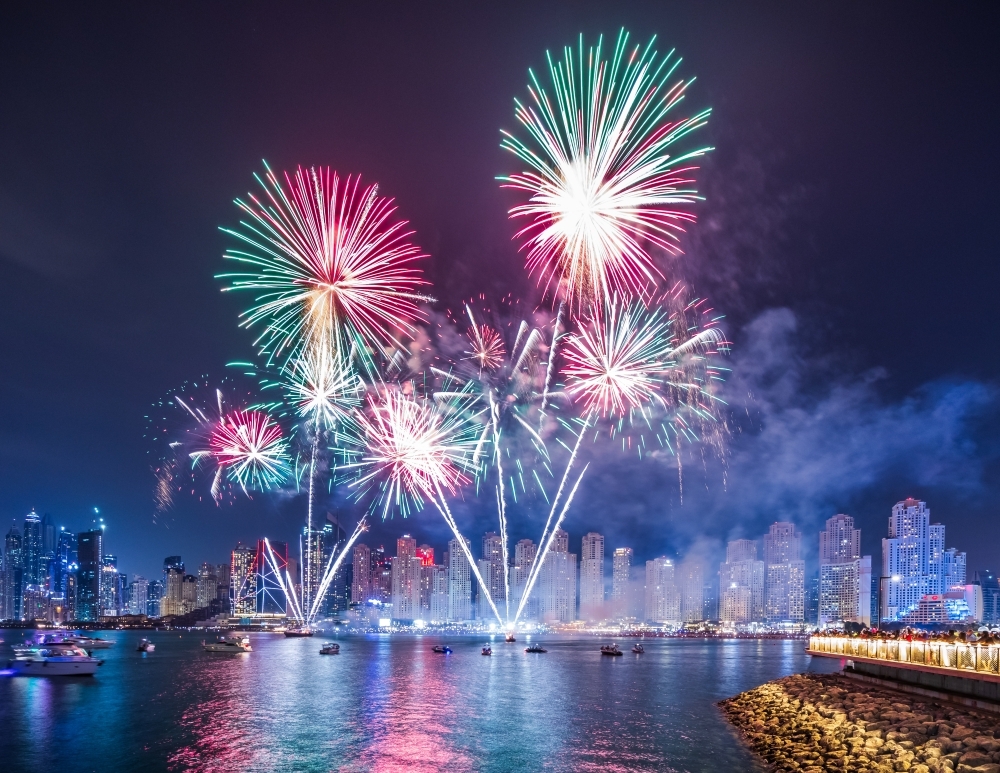The Tallest Building in the World
Most people know Burj Khalifa is the world's tallest building. What some don't know is that it wasn't supposed to be quite this tall – the original design was shorter, but during construction, Dubai decided to push higher to ensure it would definitely claim the record. The final height of 828 metres was kept secret until the opening ceremony in 2010.
The story of how this came to exist is as remarkable as the building itself. In the early 2000s, Dubai was already making bold architectural statements, but nothing prepared the world for the announcement that this emirate, smaller than most major cities, would build something taller than anything that had ever been attempted.

The Impossible Made Possible
When construction began in 2004, the building industry said it couldn't be done. Not at this height, not in this climate, and certainly not in a location that was essentially empty desert. Downtown Dubai didn't exist yet – the Burj Khalifa would be built first, and an entire district would grow around it.
The engineering challenges were unlike anything attempted before. Concrete had to be pumped higher than it had ever been pumped. The building needed to withstand winds that would make it sway like a reed, temperatures that varied from bottom to top, and the simple problem of how to get 35,000 people up and down safely every day.
Adrian Smith, the architect from Skidmore, Owings & Merrill, drew inspiration from the Hymenocallis flower and Islamic architecture, creating a spiraling form that would slice through wind rather than fight it. But inspiration was only the beginning – turning that vision into reality required inventing new construction techniques as they went along.
Engineering the Impossible
The foundation alone required 12,500 cubic metres of concrete – enough to fill five Olympic swimming pools. But the real innovation was in how they got concrete to the top. Traditional pumping methods wouldn't work at this height, so they developed a system using high-strength concrete that could be pumped 600 metres vertically – a world record in itself.
The cladding system covers 103,000 square metres and includes over 26,000 glass panels, each individually cut and fitted. Cleaning them is a three-month cycle that never ends – by the time the team finishes the top, it's time to start again at the bottom. When sandstorms hit Dubai, something curious happens: the building can disappear completely from view at ground level while people on the upper floors look down on the storm from the clear blue sky above.
Inside, 57 elevators and 8 escalators move people through 163 floors above ground. The elevators in the service areas travel at 17 metres per second - among the fastest in the world. During peak times, the building's vertical transportation system handles the equivalent of moving the entire population of a small town. The temperature difference between the ground floor and the top can reach 6°C, a subtle reminder of just how high you are.
More Than Just Height
What the Burj Khalifa achieved goes beyond breaking records. It shifted global perceptions of what was possible in the Middle East and established Dubai as a serious city in international architecture and engineering. When it opened, it didn't just surpass the previous record holder – it exceeded it by over 300 metres, a statement that was impossible to ignore.
The building houses offices, residences, hotels, restaurants, and observation decks, making it a vertical city rather than just a tall building. The Armani Hotel occupies floors 1-8 and 38-39, while residential apartments are on floors 44-72, where the silence is profound compared to the constant sound of activity in the Dubai Mall connected below. Corporate offices fill the middle sections, and the observation decks on floors 124, 125, and 148 attract over 1.5 million visitors annually.
For Dubai, the Burj Khalifa became something more than a building – it became proof of concept. It demonstrated that this young nation could conceive, finance, and construct something that had never been attempted anywhere in the world. The fact that it was completed on schedule during the global financial crisis of 2008-2009 only reinforced what it represented.
Living With a Giant
Today, the Burj Khalifa has become as much a part of Dubai's identity as the Palm Jumeirah or the sail-shaped Burj Al Arab. It's visible from virtually anywhere in the city, serving as a constant point of reference and a reminder of what human engineering can achieve when ambition meets capability.
Downtown Dubai now houses the world's largest shopping mall, one of the world's largest fountains, and some of the most expensive real estate in the region. What began as an empty plot has become one of the most recognisable addresses on earth.
Fifteen years after opening, the Burj Khalifa remains unmatched. While other cities have announced plans for taller buildings, none have materialised, leaving Dubai's giant still standing alone at the top. In a world obsessed with bigger, faster, and higher, the Burj Khalifa achieved something rarer – it built something that has yet to be surpassed, and may not be for decades to come.



